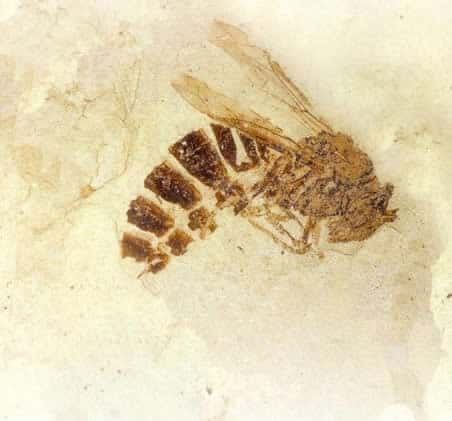
If you think wasps are a new thing, something that only recently reared its ugly head in modern geological times — think again. Wasps have been plaguing the Earth since the Jurassic. This particular fossil is part of the Palaeovespa genus, which emerged 44 million years ago during the Eocene and went extinct 34 million years ago. This is one of the late of Paleovespa wasps. But no matter how nasty wasps can be, this is one beautiful fossil.
Finding dinosaur fossils is not that uncommon. Finding ammonites or other sea creatures — that’s so last century. But finding insect fossils, especially one as complex and as well preserved as this, is truly stunning. Insects were probably just as ubiquitous and varied as they are today, but the fossil record is very limited, with only 7,000 or so species ever described. The scarcity of insect fossils (compared to their present, and probable past, diversity) is a consequence of their relative fragility, lack of hard parts, and the fact that they lived on land — which makes this fossil even more special.
Palaeovespa is noted for its similarity to the modern day genus Vespa, hence the name Palaeovespa which means ‘old Vespa’. However, the wing structure of Palaeovespa, which is more primitive, leaves no doubt that it is a distinct genus.


